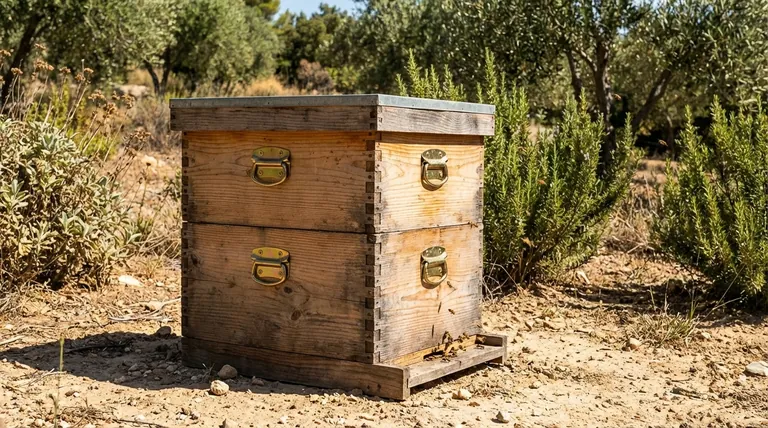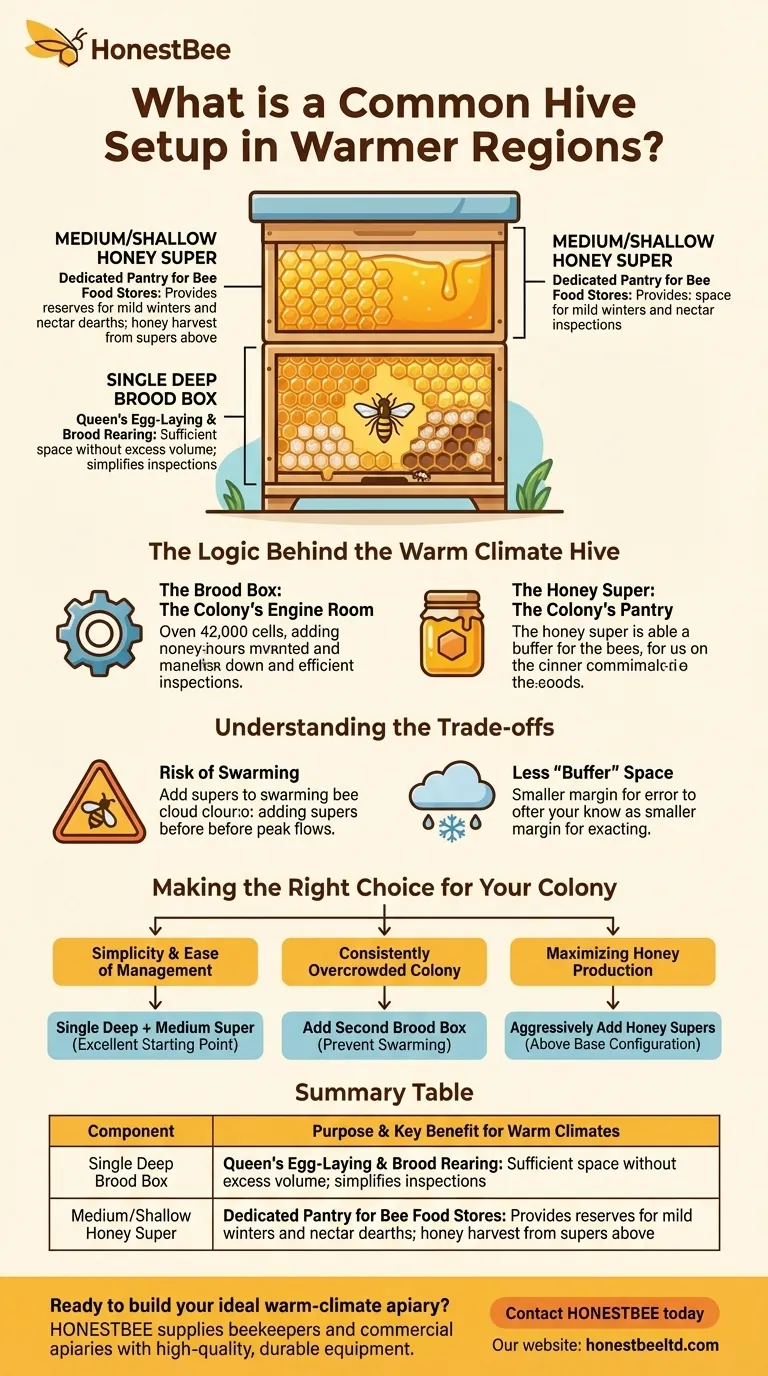For beekeepers in warmer regions, a common and effective hive configuration is a single deep brood box topped with one medium or shallow honey super. This streamlined setup provides the queen ample space for egg-laying while ensuring the colony has sufficient food reserves for the mild winters characteristic of these climates.
While various hive configurations exist, the core principle for warm climates is to provide enough space for a healthy brood nest without burdening the bees with excess volume to manage. This prioritizes colony health and efficient honey production in a stable environment.

The Logic Behind the Warm Climate Hive
Beekeeping is fundamentally about managing space. The hive configuration you choose directly impacts the colony's ability to regulate its temperature, raise young, and store food. In warmer regions, the environmental pressures are different, leading to a different approach.
The Brood Box: The Colony's Engine Room
The foundation of this setup is the single deep brood box. This is where the queen lays her eggs and where the next generation of bees is raised.
A single deep box offers approximately 42,000 cells. This provides a prolific queen with sufficient, but not excessive, room for her brood-rearing activities.
Keeping the brood nest contained within one box makes hive inspections more efficient. A beekeeper can assess the queen's laying pattern, check for pests, and monitor overall colony health without having to lift multiple heavy boxes.
The Honey Super: The Colony's Pantry
Placed directly on top of the brood box is a medium or shallow super. This box is dedicated to the bees for their own food stores.
This super acts as a buffer, ensuring the colony has a reserve of honey and pollen to sustain itself during brief nectar shortages or the very mild winter period.
Crucially, you do not harvest honey from this super. It belongs to the bees. Any additional supers placed on top of this one are for your honey harvest.
Understanding the Trade-offs
This streamlined setup is highly effective, but it's essential to understand its operational boundaries. The primary risk is not under-provisioning for winter, but rather failing to provide space quickly enough during a nectar flow.
Risk of Swarming
Because the brood area is more compact, a strong colony can fill it quickly. If the bees run out of space for both brood and incoming nectar, their natural instinct is to swarm.
To prevent this, you must be vigilant. Add more honey supers before the bees need them, especially during peak nectar flows in the spring and summer.
Less "Buffer" Space
Compared to a two-deep setup common in colder climates, this configuration has a smaller margin for error. A sudden, unexpected cold snap or a prolonged period of rain could deplete the colony's stores more quickly.
However, in most warm climates, the continuous availability of forage throughout much of the year makes this a manageable and calculated risk.
Making the Right Choice for Your Colony
Ultimately, your hive setup should be guided by direct observation of your bees and local conditions, not by rigid rules.
- If your primary focus is simplicity and ease of management: A single deep brood box with a dedicated medium honey super is an excellent, lightweight starting point.
- If you observe your colony is consistently overcrowded: Do not hesitate to add a second brood box, effectively adopting a more northern-style configuration to prevent swarming.
- If you are focused on maximizing honey production: Be prepared to add honey supers aggressively on top of this base configuration as soon as nectar starts flowing.
By understanding these principles, you can adapt your hive to support a healthy, productive colony in any warm climate.
Summary Table:
| Component | Purpose | Key Benefit for Warm Climates |
|---|---|---|
| Single Deep Brood Box | Queen's egg-laying & brood rearing | Sufficient space without excess volume to manage; simplifies inspections. |
| Medium/Shallow Honey Super | Dedicated pantry for bee food stores | Provides reserves for mild winters and nectar dearths; honey harvest from supers above. |
Ready to build your ideal warm-climate apiary?
HONESTBEE supplies beekeepers and commercial apiaries with the high-quality, durable equipment needed for this efficient setup. From deep brood boxes to medium honey supers, our wholesale-focused operations ensure you get the right gear for a healthy, productive colony.
Contact HONESTBEE today to discuss your beekeeping needs and get a quote!
Visual Guide

Related Products
- Professional Grade Foldable Beehive Handles
- Professional Galvanized Hive Strap with Secure Locking Buckle for Beekeeping
- Professional Engraved Round Hive Number Tags for Beekeeping
- Professional Pneumatic Wire Embedder for Beehive Frames
- HONESTBEE Square Top Hive Bee Feeder Top Bee Feeder
People Also Ask
- What are some potential benefits of drones in a bee colony? Enhancing Hive Health and Productivity
- When should the first inspection of a new hive be conducted? Ensure a Strong Start for Your Colony
- Why are regular hive checks important for Flow Hives? It's About Bee Health, Not Just Honey
- What month do honey bees come out? Understand Their Spring Emergence & Activity Cycle
- Why is it important to understand honey bee behavior when handling them? Master Safe & Effective Beekeeping



















